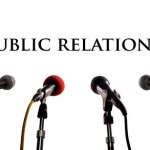“With great exposure comes great responsibility.”
Without a doubt, social media marketing is the great equalizer. Until the arrival of WordPress, Facebook, YouTube and Twitter, big business had an unfair advantage. Any business could of course create a website but few had the resources and knowledge to capture global exposure and sales.
Most SMEs had to settle for direct mail, local newspapers, networking, pay-per-clicks etc. because they simply could not compete with the big budgets of the big brands. In most cases, the advertising mediums with the biggest reach and frequency – TV, radio, online banner and outdoor – were out of the grasp of the average small business.
Social media marketing changed all of that.
With social media marketing, anyone can create an online presence and broadcast their uncensored views or talent worldwide, for less than $500. People like Justin Bieber and Lily Allen went from middle class obscurity to millions of fans and multi-million dollar careers virtually overnight due to social media.
Neilson published stats show that the world now spends over 110 billion minutes on social networks and blogs. What this means is that you, I and your prospects now spend 25% of our time (around 12-15 hours a month) visiting these types of sites. And unlike the consumption of other types of media, social media is doubling year on year, it’s inexpensive and it’s now available 24/7 on mobile devices.
And therein lies the problem.
Good and bad news, whether true or untrue, can spread online like an epidemic. As opposed to advertising (which is initiated by you), a large percentage of what is said in social networks (and social media marketing) is contributed by people outside of your organization. How do you keep track of every single thing that is said or written about you? It’s almost impossible to monitor and control where and how your brand is mentioned online.
That’s why social media marketing has the potential to boost your reach and sales exponentially, but it could also easily bring out the worst in your company. With this in mind, what do you need to consider and do in your business to mitigate the risks?
1. Social media marketing is for social interaction
The focus of traditional marketing and advertising is on lead generation and sales. However, in social media marketing, it’s all about engaging with others, exchanging information and creating relationships. In order to excel in the realm of social networks, you will need to offer value upfront (to gain followers) and then focus on getting to know them and understanding their needs.
Prospects and customers are more interested in the interaction they have with you than they are on the deals or special offers. If you don’t engage with your followers on their terms, you risk doing more harm to your brand than good. Think of how many people and businesses have asked you to “like” their brand, re-tweet a message or join their mailing list in the past 24 hours? We are inundated with brands talking at us in social media and it is getting harder to create an impression and persuade us to act.
2. Look for opportunities to turn around customer experiences
You will discover more in one week about your brand in social media marketing circles than you will find in a year of traditional research. People don’t censor their opinions when they share with their friends and you are likely to hear a lot of stories of how you have fallen short of expectations. All of this is a very good thing because it means that you have a direct opportunity to make it right. Of course, you have to be listening and you need to have a strategy on how you will deal with it. In the absence of these 2 things, you are actually worse off because the story will spread like wildfire and it will carry a much greater weight since it is shared among friends.
Most will mistakenly view social media marketing as a great place to sell more stuff. It is actually a far better place to listen to what your customers are saying and take action to turn bad experiences into positive ones.
3. What is it really costing you?
On the face of it, social media marketing appears practically free. However, when you factor in the time it takes to produce content across various mediums, cross- promote it, reply to followers etc., it could easily turn into a full time job. Your time (or the time of a team member) is valuable and needs to be measured against the returns generated by the online activity. Return on investment online is a function of both tangible and intangible factors.
In my experience, far too many small businesses are getting caught up in the hype of social media marketing without a clear understanding of the real cost or return. Why spend hours a day posting and interacting online if you can generate a better response by speaking directly to your customers or asking for a referral? Social media marketing only promises you can talk to more people for less money, it doesn’t guarantee that anyone will listen or that you will earn the same return on investment that you could receive elsewhere.
4. Be clear about your brand and branding strategy
Prospects often need to see the same message many times before they will decide to take action. One of the biggest mistakes that you can make is to overload your audience with too many messages because you are trying to be all things to all people. Repetition is the key to retention. In order to be remembered and acted upon, your message should be consistent across all channels including your social media marketing. This means that wherever your prospects and customers see you, they have to experience your brand and your message in the exact same way. This can become difficult when you are trying to manage multiple platforms and respond to what is happening in real time.
It pays to have a very clear strategy before you embark on social media. Social media marketing is not like traditional advertising channels – it is very fluid and dynamic. As such, circumstances can change on a daily basis and you need to outline ahead of time what your key messages are and how they should be communicated consistently to your audience.
5. Social media marketing is not for everyone
Who manages your social media marketing? If it is not you personally, does that employee or part-time contractor understand what your plan and overall strategy is? In many cases they may be the most direct links to your target market and everything that is said by them on your behalf will have far reaching implications for your brand and company.
If they are responding to a disgruntled customer or worse, an insane person who is just trying to create trouble, do they know exactly what to do to diffuse the situation? If the situation gets out of hand, at what point do you find out and become involved? Do you have the means to take action and protect your brand if matters get out of hand or you become the target of defamation?
The reach and potential of social media are great – so are the risks. While it may seem harmless and fun on the surface, the capacity to do irreparable harm to your brand is very real. Social media marketing needs to be entered into with a very clear plan. It’s not something that you should delegate freely or allow to run unmanaged.
Start first by monitoring what is said about you and your brand online. There are many free services online which can assist you to do this. Take some time to investigate what your competitors and other well known brands are doing in this space. Then, once you understand the key platforms and what you hope to gain on each by participating, you can begin to create a community of followers with confidence, control and safeguards.
 I recently purchased a pair of authentic Vintage Versace sunglasses online and was amazed at the number of fake designer sunglasses and handbags advertised on the internet. In fact, there are more videos and websites dedicated to promoting and avoiding counterfeit products than there are sites selling genuine designer items.
I recently purchased a pair of authentic Vintage Versace sunglasses online and was amazed at the number of fake designer sunglasses and handbags advertised on the internet. In fact, there are more videos and websites dedicated to promoting and avoiding counterfeit products than there are sites selling genuine designer items.
What does this tell you?
The market for rip offs and counterfeit items is huge. According to fashionistas, editors and bloggers in the industry, the total spending on fake or “knock-off” designer goods eclipses the amount actually spent on the real thing. In fact, if you see someone on the street with a Versace, Hermes or Fendi bag, there’s only a 1 in 100 chance that it’s authentic. Customers prefer replicas.
So how does this impact you and your business?
Unfortunately, many consumers would rather invest a little to give the appearance that they appreciate quality. The fakes are inferior, but many customers choose them anyway because they want to maintain a facade. They want the quick fix – the easy path to looking successful but few want to make the necessary investment of time and money, required to BE successful.
In order to stand out in a marketplace where imitations and charlatans are plentiful, you need to do the opposite of what your competition is doing.
Where their message is confusing, yours must be simple.
When they are selling features and benefits, you must present the solution.
Where they are focused on their brand, you must identify your customer’s pain and cure it.
Where their claims are unsubstantiated, yours must be tangible.
There will always be a long list of vendors and products to satisfy the insatiable appetite for “almost authentic”. And in the end, the purchaser will always get exactly what they paid for. If you continue to compete based on price alone (or intangible claims), 99% of your customers will continue to assume that you are not the real deal either.
Rest assured, your potential customer will continue to be in pain no matter which replicas and quick fixes she purchases in the meantime. Eventually, the pain will become so acute that she will seek out your genuine solution. Make it easier for her to find you by having a clear message that helps her to decide and say “Yes.” Help her to know that you are authentic – put a fair price on what you do, provide tangible proof your solution works and then deliver on your promise.
Solutions are like diamonds, precious and rare. Fakes are like dry leaves in the fall, found everywhere.
Article Source: http://EzineArticles.com/6586136
18 Sep 2011
Is Bottled Water Making You Stupid?
Bottled water is THE most profitable drink product in the world, selling for 3000 to 9000 times what you pay for the perfectly safe, inexpensive liquid that comes out of your tap at home.
To put this in context, paying $2.40-3.90 for a 750ml bottle of water is equivalent to:
• $10,000 for a tuna sandwich at your local cafe or
• A bill from your water company this month for $3000/tonne of water (as opposed to the going rate of $1.2/tonne)
According to the Australasian Bottled Water Institute, Australians consume over 250 million litres a year at a price of $385 million. We have been systematically brainwashed by the beverage industry to believe that our tap water is somehow unsafe or insufficient – look around and you will see that there are now hundreds of brands competing for your attention with clever marketing campaigns designed to scare, seduce and mislead you to part with your hard earned money.
Despite its association with prestige, purity and pristine conditions, bottled water is often no better than tap water (in terms of taste and cleanliness) and the production process it is extremely harmful to our environment.
Did you know that:
• For every 250 million litres of bottled water, it takes 125million litres of oil to produce the plastic bottles, refrigerate and ship them from one part of the world to another
• For every litre of bottled water sold, another 2 litres are used up in the production process
• More than ½ of the brands on the market are derived from municipal water supplies, despite the fact that the packaging would lead us to believe they come from unspoiled mountain streams or underground springs
• Over 80% of the bottles end up in landfills and are never recycled
It is estimated that bottled water has become a more than $45 billion dollar industry worldwide. Surprisingly, 97% of it is consumed in countries which have plentiful sources of clean, safe drinking water. We can afford to turn our noses up, avoid the tap and fork out millions for bottled water: our choice however is purely a lifestyle one. A lifestyle choice for us with life and death consequences for others and our planet.
For 2.6 billion people in the developing world, lack of clean water and basic sanitation is a life or death situation. It is estimated that half of the people in the developing world are suffering from diseases associated with inadequate water or sanitation and that 5 million people die each year. According to the International Water Management Institute, clean water and improved sanitation could be provided to everyone on earth for an outlay of $11 billion a year (less than a quarter of our global $45 million spending on bottled water), yet to date, there has been no impetus to re-channel the money and change our thinking on this important issue.
So you may be sitting there and thinking, what does this mean for YOU and your business?
Well, nothing… and yet perhaps, everything.
How often have you (or someone else in your team) said:
• “if we had more money, we could invest in X and improve our business?”
• “if we put our prices up by 10%, we will lose customers.” or
• “we can’t afford to buy X because it’s too expensive.”
You already have enough money to do and buy all of the things that you need – it’s simply a matter of common sense and priorities. We are all affluent in this country: It is your mindset and your language which is lacking, not your bank account.
In fact, each and every day you and I waste money by overpaying for bottled water and other convenience/impulse items. We rarely stop to think about the true value of what we got vs. what we paid. Bottled water is just one obvious example and it is not difficult to see how this might be playing out in other areas of our lives.
You and I have happily overpaid for products. Yet we struggle to charge what we are worth or put our prices up because we fear that no one will buy. Isn’t that interesting?
Perhaps you and I need to take a lesson from the bottled beverage industry and focus on how we are marketing and selling our products/services? Is fear more powerful than selling benefits? Is perception more influential than reality? Are you seducing your customers with sizzle or merely putting them to sleep with your low prices?
Think about it. Beverage companies have managed to package and sell to us something that is practically free and plentifully abundant, for thousands of times what it is worth. And up until now, we have all paid willingly. Bottled water has in fact made us all look a bit foolish.
Maybe it’s not the price you are charging that is the problem? It’s the way you are choosing to promote your product/service. The best time to change your mindset and your approach is now. Anything is possible.
Article Source: http://EzineArticles.com/4936397
Media outlets constantly search for stories and people who will captivate the attention of their audiences. What this means for you and your organization is that today is the best time to reach out and earn your share of the millions in free publicity that is available every single day.
How do you impress the media and stick out in a sea of wannabes?
First and foremost, don’t waste their valuable time. Virtually, every media outlet is operating with fewer staff than they had last year. This means that they still have the same pressing deadlines and space to fill but they don’t have enough staff to do it.
If you want your pitch to stand out amongst the thousands that hit their inbox today – it has to be memorable, relevant and thorough.
Here are my TOP 4 Tips to guarantee you attract attention no matter what product or service you are selling.
1. Be Newsworthy. You can never hope to “make the news” if you have no idea what is going on in the news. The media is not interested in your product or service. What they are interested in are celebrities, politicians, sports stars, scandals, natural disasters and other headline news. If you want to be featured, you need to make what you do relevant in the context of what is happening today in the news. Tie what you do to someone or something that is newsworthy and you will become the go-to-expert for top shows, magazines and newspapers.
2. Tailor Your Story. If you don’t read a particular publication or follow a show, chances are that it will be almost impossible for you to hit the target with the editor or producer. They get thousands of pitches every day – if it doesn’t fit squarely within what they do, they will simply toss it in the garbage. It is better to send out 2 custom pitches a day that are carefully crafted than 100 generic emails or faxes that are too broad to appeal to anyone.
3. Create your own news. The other day I got a call from a national news organization who read my pitch that 1/3 of the population suffers from insomnia. They immediately wanted to interview me. Now, insomnia has been around since the beginning of time. Why did it become a pressing national news story on Tuesday at 9am in Melbourne? 1/3 of the general population is a lot of people. If something affects a lot of people, it becomes newsworthy. The trick to garnering media attention is to take some aspect of what you do and make it tangible and real (as a problem) to the lives of many.
4. Follow the story and add to it. If you watch carefully you will notice that the media tends to follow a hot story for an extended period of time. Take for example Claire Werbeloff, the chick-chick-boom girl, who became a Youtube sensation around the world for lying about the events leading up to a Kings Cross murder. Even though she had no talent, connection to the crime or evidence, we were forced to endure more than 4 weeks of national coverage on her (not the crime). She eventually went on to be featured in Ralph magazine and was offered work with Channel 9. To emulate this you need to track the pulse of hot news stories and be on the lookout for opportunities to enhance the coverage by contributing insights and expert commentary. When it comes to breaking news, the media is on the look-out for related subjects which add to the story or new angles that are fresh and captivating.
Media outlets capture eyeballs with news and they are not in the business of selling your products or services. By following the news and becoming newsworthy, you will increase your chances exponentially of being picked up and featured.
The good news is that media outlets are constantly searching for stories and people who will capture and captivate the attention of their audiences. What this means for you and your organization is that right now (TODAY) is the best time for you to reach out and earn some of the millions of dollars of free publicity that is available every day.
Article Source: http://EzineArticles.com/3142180
07 Aug 2011
5 Clues That Your Press Release Sucks
 Right now you are probably asking yourself “how does she know that?”.
Right now you are probably asking yourself “how does she know that?”.
I haven’t even seen any of your press releases… and that’s OK, I don’t need to. I already know the answer. Trust me!
First of your press release is WAY too long…
Second, you don’t have any bullets in them. Media people have the attention spans of mosquitoes and you need to feed your story idea to them in a press release with 30 second sound bites.
Third, no one cares about your product, service, company or book. You need to react to what is in the news today! You aren’t doing that, are you? How does what you have to sell relate to the latest sports scandal, celebrity melt down, internet scam or politician who has accepted a free flight on Qantas? Does your press release fix a major problem that listeners/readers have today?
Fourth, no one is reading your press release because you are mailing or faxing them out in bulk and not following up. You need to electronically send them out to several places (both local media and big online services like prlog.com) and follow them up with an actual phone call.
Finally, make sure you turn your press release into an article and send them out to Ezine release companies, post them on your blog, mention them on social media (Twitter, Facebook, G+, LinkedIn, Pinterest) and include them in your Enewsletter blast to your database. Remember, you will be lucky if you receive a response to your first press release. The key is to be short, sharp, newsworthy, interesting and persistent. Relevancy, follow up and persistence are the 3 keys to your success.
Stay tuned for my next installment where I am going to show you how to write a $10m Press Release!












